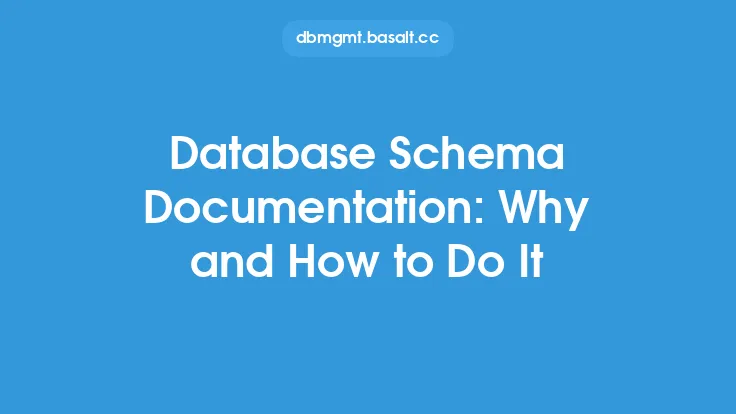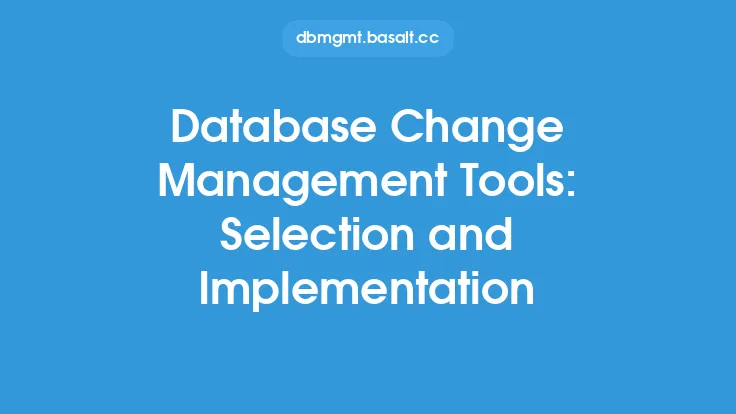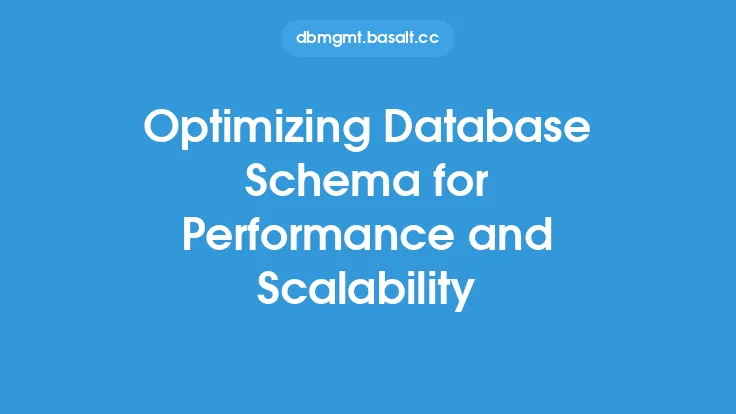Managing changes and updates to a database schema is a crucial aspect of database implementation. As databases evolve to meet the changing needs of applications and users, their schemas must also adapt to accommodate new requirements, features, and data structures. Database schema versioning is the process of managing these changes in a controlled and systematic manner, ensuring that the database remains consistent, reliable, and performant.
Introduction to Database Schema Versioning
Database schema versioning involves tracking and managing changes to the database schema over time. This includes creating a version control system for the schema, which allows developers to track changes, revert to previous versions if necessary, and collaborate on schema development. Effective schema versioning is essential for maintaining data integrity, ensuring backward compatibility, and supporting the evolution of the database over time.
Benefits of Database Schema Versioning
The benefits of database schema versioning are numerous. Firstly, it provides a clear audit trail of changes, allowing developers to track who made changes, when, and why. This is particularly important in regulated industries where data governance and compliance are critical. Secondly, schema versioning enables developers to collaborate on schema development, reducing the risk of conflicts and errors. Thirdly, it allows for the creation of a version history, enabling developers to revert to previous versions of the schema if necessary. Finally, schema versioning facilitates the testing and validation of schema changes, reducing the risk of errors and data corruption.
Database Schema Versioning Techniques
There are several techniques used in database schema versioning, including:
- Schema migration scripts: These are scripts that apply changes to the database schema, such as creating or modifying tables, indexes, or relationships. Migration scripts can be written in a variety of languages, including SQL, Python, or Ruby.
- Version control systems: These are systems that track changes to the schema, such as Git or Subversion. Version control systems provide a centralized repository for schema changes, allowing developers to collaborate and track changes.
- Database schema comparison tools: These are tools that compare the current schema with a previous version, highlighting changes and differences. Comparison tools can be used to identify changes, validate schema updates, and troubleshoot issues.
Best Practices for Database Schema Versioning
To implement effective database schema versioning, several best practices should be followed:
- Use a version control system: A version control system provides a centralized repository for schema changes, allowing developers to collaborate and track changes.
- Create migration scripts: Migration scripts provide a clear and repeatable way to apply changes to the database schema.
- Test and validate schema changes: Testing and validation ensure that schema changes do not introduce errors or data corruption.
- Document schema changes: Documentation provides a clear record of changes, allowing developers to understand the rationale behind schema updates.
- Use automated tools: Automated tools, such as schema comparison tools, can simplify the process of tracking and managing schema changes.
Database Schema Versioning Tools
Several tools are available to support database schema versioning, including:
- Flyway: An open-source tool that provides a simple and flexible way to manage schema migrations.
- Liquibase: A popular tool that provides a comprehensive set of features for managing schema changes, including migration scripts, version control, and automated testing.
- DBDiff: A tool that provides a simple and intuitive way to compare and synchronize database schemas.
- Schema Compare: A tool that provides a comprehensive set of features for comparing and synchronizing database schemas, including support for multiple databases and version control systems.
Challenges and Limitations of Database Schema Versioning
While database schema versioning provides numerous benefits, there are also several challenges and limitations to consider:
- Complexity: Database schema versioning can be complex, particularly in large and distributed databases.
- Performance: Schema changes can impact database performance, particularly if they involve significant modifications to tables or indexes.
- Data integrity: Schema changes can potentially introduce data corruption or inconsistencies, particularly if they involve changes to data types or relationships.
- Collaboration: Database schema versioning requires collaboration and communication among developers, which can be challenging in distributed teams.
Conclusion
Database schema versioning is a critical aspect of database implementation, providing a systematic and controlled way to manage changes and updates to the database schema. By using version control systems, migration scripts, and automated tools, developers can track changes, collaborate on schema development, and ensure the integrity and performance of the database. While there are challenges and limitations to consider, the benefits of database schema versioning make it an essential practice for any database implementation project.





